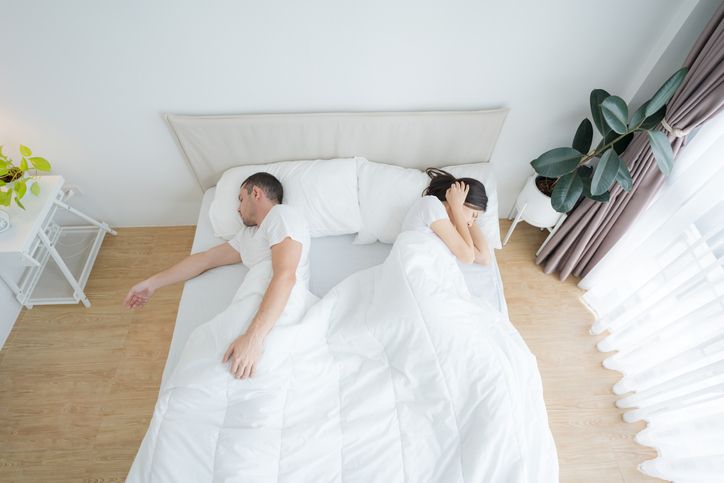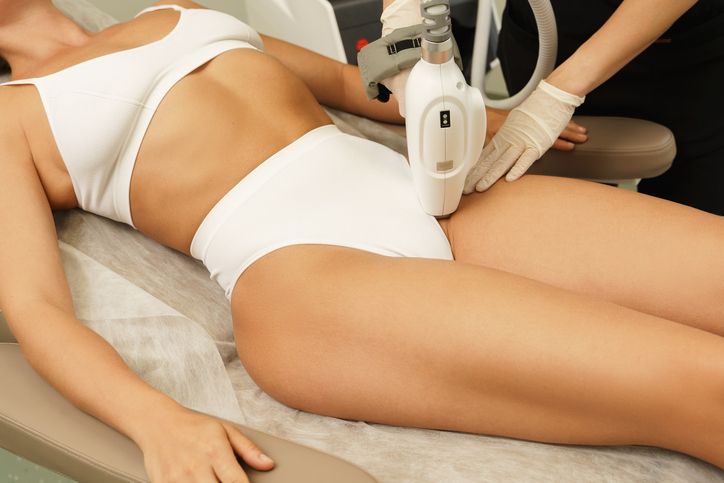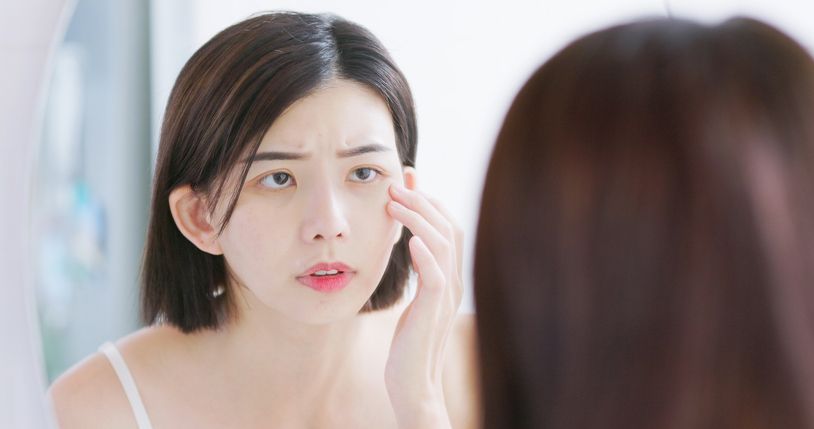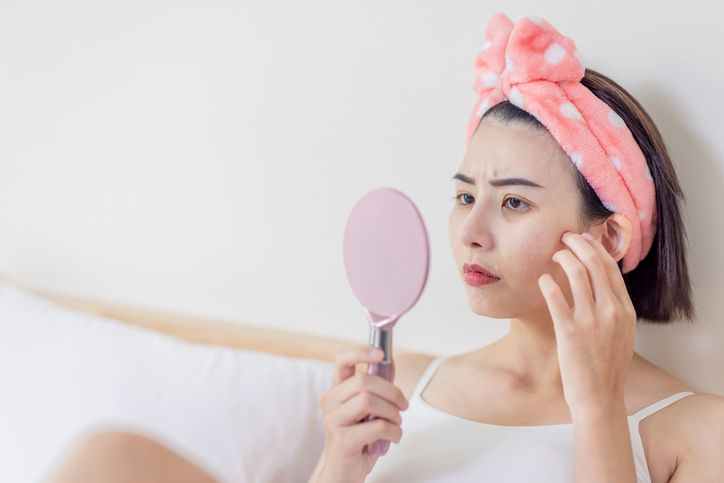- Home
- Trend
- Weight Loss Strategies
- Acne Tips
- Hair Health Information
- Blemish Removal Tips
- Acne Scar Removal Tips
- Muscle Building Techniques
- Intimate Care Tips
- Postpartum Intimate Care
- Eye Bags Wiki
- Tips for Face Slimming
- Secret of Permanent Hair Removal
- Breast Enlargement Tips
- Cure to Snoring
- Marionette Lines
- Skin-Tightening Secrets

免費體驗
F8 Hair Regrowth Treatment
1 Minute Self-Registration
Date should not be before minimal date
Hair loss can be a sensitive topic, but there are numerous ways to address it and regain your confidence. In this comprehensive guide, we'll explore 30 effective strategies to hide hair loss. Whether you're dealing with male pattern baldness, thinning hair, or any other hair loss issue, these solutions can help you look and feel your best.
1
Experiencing Thin Hair or Feel Like Hair Growth No Longer as Fast as Before?
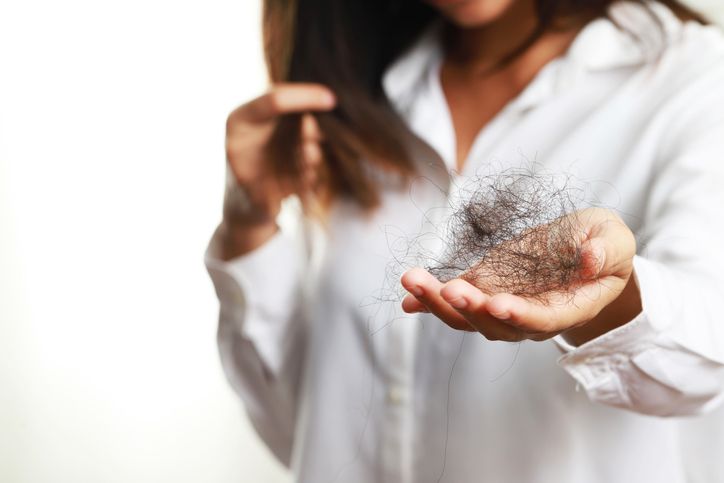
Hair loss, known medically as alopecia, can affect both men and women, but the underlying causes may vary between the sexes. Here's a detailed explanation of the common causes of hair loss in both men and women:
Common causes of men hair thinning
1. Androgenetic Alopecia (Male Pattern Baldness): This is the most common cause of hair loss in men and is primarily genetically determined. It's related to the hormone dihydrotestosterone (DHT), which can cause hair follicles to shrink and eventually stop producing hair. Male pattern baldness typically begins with a receding hairline and/or thinning at the crown and can progress to partial or complete baldness.
2. Telogen Effluvium: This type of hair loss occurs due to a sudden shock to the system, such as illness, surgery, or extreme stress. It pushes hair follicles into the resting (telogen) phase, resulting in noticeable hair shedding a few months after the triggering event. Telogen effluvium is often temporary, and hair typically regrows once the underlying issue is resolved.
3. Alopecia Areata: This is an autoimmune condition where the immune system mistakenly attacks hair follicles, leading to round, smooth bald patches on the scalp or other body hair. The exact cause is unknown, but genetics and environmental factors may play a role.
4. Medications: Certain medications, such as those for cancer (chemotherapy), high blood pressure, or depression, can cause hair loss as a side effect. This hair loss is usually temporary and reversible once the medication is discontinued.
Common causes of female hair thinning
1. Androgenetic Alopecia (Female Pattern Hair Loss): Women can also experience pattern hair loss, though it tends to differ from the male pattern. Female pattern hair loss typically results in diffuse thinning over the top of the scalp rather than receding hairlines or bald spots. Genetics and hormonal factors play a role in this condition.
2. Telogen Effluvium: Women are susceptible to telogen effluvium as well. It can be triggered by factors like pregnancy, childbirth, illness, or extreme stress. Hormonal changes, such as those associated with childbirth or menopause, can also contribute to this condition.
3. Alopecia Areata: Just like in men, alopecia areata can affect women and lead to patchy hair loss.
4. Hormonal Imbalances: Hormonal fluctuations, such as those caused by polycystic ovary syndrome (PCOS), thyroid disorders, or menopause, can lead to hair loss in women. High levels of androgens (male hormones) can contribute to hair thinning.
5. Traction Alopecia: This type of hair loss occurs when hairstyles that put excessive tension on the hair follicles, like tight ponytails, braids, or extensions, are worn for extended periods. Over time, this tension can damage the follicles and lead to hair loss.
6. Nutritional Deficiencies: Inadequate intake of essential nutrients, particularly iron, zinc, biotin, and protein, can result in hair thinning or loss in women.
It's essential to consult a healthcare professional or dermatologist to determine the specific cause of hair loss, as well as appropriate treatment options. Treatment may include medications, lifestyle changes, dietary improvements, or topical treatments, depending on the underlying cause and individual circumstances. Early intervention often yields the best results in managing and potentially reversing hair loss in both men and women.
2
30 Ways to Hide Thinning Hair

1. Choose the right hairstyle
Selecting an appropriate hairstyle plays a crucial role in concealing hair loss. Opt for styles that incorporate layers or those with curls and waves. These styles create volume and texture, making your hair appear fuller and effectively camouflaging areas with thinning hair.
2. Use hair thickening shampoos
Invest in high-quality hair thickening shampoos that contain beneficial ingredients like biotin or keratin. These products temporarily enhance the thickness and texture of your hair, providing the appearance of fuller and more voluminous strands.
3. Hair fibre powders
Hair fibre powders consist of micro-fine fibres that adhere to your existing hair. When applied to areas with thinning hair, these fibres instantly cling to your strands, creating the illusion of thicker and denser hair, thus concealing bald spots.
4. Volumizing mousse
Prior to styling your hair, applying volumizing mousse can work wonders. This product gives your hair an immediate lift, resulting in the appearance of increased volume and fullness, effectively concealing areas with hair loss.
5. Hair building fibres
Much like hair fibre powders, hair building fibres are an effective solution to quickly conceal thinning areas. These fibres attach themselves to your existing hair, making it look denser and less susceptible to balding.
6. Conceal with makeup
Specialised hair makeup products, such as scalp concealers, are designed to match the colour of your scalp with that of your hair. By applying these products to bald spots, you can effectively camouflage them, making hair loss less noticeable.
7. Consider hair extensions
Hair extensions are strands of hair that can be integrated with your existing hair, providing both added length and volume. They come in various forms, including clip-in extensions and professionally installed extensions, offering flexibility in achieving the desired look.
8. Topical hair loss concealers
Topical hair loss concealers utilise tiny fibres that adhere to your natural hair, instantly imparting a thicker and fuller appearance. These products effectively cover thinning areas, making hair loss less conspicuous.
9. Regular trims
Having trim regularly is essential for maintaining the overall health of your hair. They help prevent the development of thinning ends, ensuring that your hair retains a well-groomed and denser appearance.
10. Wear a hat
Donning a stylish hat serves a dual purpose: it complements your fashion sense and offers a practical way to conceal hair loss when needed. Hats provide a quick and easy solution to hide thinning or balding spots.
11. Try a hair topper
Hair toppers, also known as wigs, come in a wide variety of styles and colours, allowing you to experiment with different looks while effectively concealing hair loss. They provide a versatile and convenient solution without requiring alterations to your natural hair.
12. Low-level laser therapy
Low-level laser therapy (LLLT) is a non-invasive treatment method that stimulates hair follicles, promoting hair growth and reducing hair loss. This innovative therapy enhances the overall health of your scalp and hair, contributing to a fuller and denser appearance. Check out the next section if you are interested in reversing your receding hairline!
13. Nutritional supplements
Certain dietary supplements, including biotin, zinc, and omega-3 fatty acids, can contribute to overall hair health and minimise hair loss when incorporated into a well-balanced diet. These supplements provide essential nutrients that support the strength and vitality of your hair.
14. Camouflage with scarves
Stylish scarves and head wraps can serve as both fashionable accessories and effective tools to conceal hair loss. They provide a versatile and aesthetically pleasing solution for covering areas with thinning hair.
15. Scalp micropigmentation
Scalp micropigmentation is a cutting-edge technique that involves the application of tiny pigment dots on the scalp's surface. These dots are strategically placed to mimic the appearance of hair follicles. The result is a natural and closely shaved head look, effectively concealing bald spots or receding hairlines. This method is especially popular among individuals who prefer a clean-shaven appearance but want to maintain the illusion of hair density.
16. Opt for a toupée
Modern toupees, also known as hairpieces or hair systems, have evolved significantly in recent years. They are now custom-made to match your hair colour, texture, and even your hairline, providing a remarkably natural appearance. These hairpieces are designed to be undetectable, with advanced attachment methods that ensure a secure fit. Choosing a high-quality toupee can be an effective and confidence-boosting solution for those dealing with hair loss.
17. Massage your scalp
Regular scalp massages offer multiple benefits for individuals experiencing hair loss. Massaging the scalp helps improve blood circulation to the hair follicles, ensuring they receive essential nutrients and oxygen. This increased circulation can stimulate dormant hair follicles, potentially promoting natural hair growth. Scalp massages are a non-invasive and relaxing way to support hair health.
18. Prescription medications
Consulting a healthcare professional about prescription medications like minoxidil (Rogaine) or finasteride (Propecia) is a recommended step for treating hair loss. Both medications are FDA-approved and have shown efficacy in promoting hair regrowth. Minoxidil is available as a topical solution, while finasteride is an oral medication. These treatments work by addressing the hormonal factors contributing to hair loss and can be part of a comprehensive approach to combat hair loss.
19. Change your parting
A simple change in your hair parting can be an effective trick to cover up a thinning hairline. Altering the direction of your part can create the illusion of fuller hair and minimise the visibility of receding areas. Experimenting with various parting styles allows you to find the one that best suits your needs and conceals thinning hair effectively.
20. Hair transplant surgery
Hair transplant surgery is a surgical procedure that involves extracting hair follicles from a donor area (typically the back of the head) and implanting them into areas with thinning or no hair. This procedure provides a more permanent solution to hair loss and offers natural-looking results. Hair transplant surgery can significantly improve hair density and restore a fuller head of hair.
21. Biotin supplements
Biotin, a B-vitamin known as vitamin H, plays a crucial role in promoting healthy hair growth. Taking biotin supplements can help strengthen hair, reduce brittleness, and support overall hair health. However, it's essential to consult with a healthcare professional before starting any supplement regimen to determine the appropriate dosage and ensure it aligns with your specific needs.
22. Dye your hair
Colouring your hair can be a strategic technique to create the appearance of thicker and more vibrant hair. Hair dye coats the hair shaft, adding thickness and dimension. Choosing shades that match your natural hair colour can effectively camouflage thinning areas, giving your hair a fuller and healthier look.
23. Derma roller
A derma roller is a handheld device equipped with tiny needles that can be used to stimulate hair follicles. When gently rolled over the scalp, these needles create micro-injuries that encourage the body's natural healing response. This can stimulate hair follicles, leading to improved hair regrowth. Using a derma roller alongside topical treatments can enhance their effectiveness.
24. Minimise stress
High stress levels can contribute to hair loss through various mechanisms, including hormone imbalances and increased inflammation. Engaging in stress-reduction techniques like yoga, meditation, exercise, or mindfulness can help mitigate these effects. By managing stress, you may reduce the risk of further hair loss and promote a healthier scalp environment.
25. Use hair accessories
Hair accessories such as headbands, hair clips, and pins can serve as stylish and practical solutions to disguise hair loss. These accessories add decorative elements to your hair, diverting attention away from thinning areas and creating an overall more attractive hairstyle.
26. Change your pillowcase
Opting for silk or satin pillowcases is a simple yet effective way to protect your hair's health. These smooth fabrics create less friction with your hair compared to traditional cotton pillowcases. As a result, there's reduced risk of hair breakage, helping to maintain hair thickness and overall hair health.
27. Stay hydrated
Proper hydration is essential for overall hair health. Drinking an adequate amount of water daily ensures that your hair stays moisturised and less prone to dryness and brittleness. Well-hydrated hair is more resilient and less likely to experience breakage.
28. Hair accessories tricks
Using cleverly designed hair accessories can be an inventive way to create the illusion of thicker hair. Hairbands that add volume or hair clips that strategically position hair can make your hair appear denser and more vibrant.
29. DIY hair masks
Homemade hair masks made from natural ingredients like eggs, honey, and olive oil can provide your hair with essential nutrients and hydration. These masks nourish and strengthen your hair, contributing to its overall health and resilience.
30. Seek professional advice
When dealing with more severe cases of hair loss, it's crucial to consult with a dermatologist or hair specialist. These professionals can provide expert guidance and recommend advanced treatments such as platelet-rich plasma (PRP) therapy or prescription hair growth medications tailored to your specific needs. Seeking professional advice ensures a comprehensive approach to addressing hair loss.
3
Promote Hair Growth with the Benefits of F8 Hair Regrowth Treatment
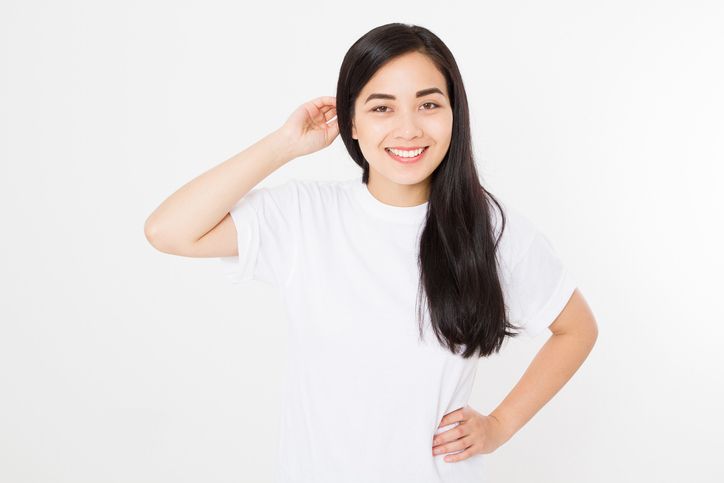
The F8 Hair Regrowth Treatment offers an effective method to support the vitality and strength of your hair. Incorporating a hair tonic into your hair care routine can be a valuable addition, as it promotes hair growth, enhances hair strength, and contributes to overall hair health.
This treatment stands out as a non-invasive and downtime-free solution to combat hair loss and stimulate hair regrowth. It utilises low-level lasers during the procedure to stimulate hair follicles and increase blood circulation in the scalp. This gentle and painless stimulation serves as a wake-up call to dormant hair cells. Over time, this process fosters the growth of healthy hair, resulting in thicker and more vibrant locks.
What F8 Hair Regrowth Treatment Can Offer You
1. Improved Blood Circulation: The treatment's ability to revive inactive hair cells is complemented by the hair tonic's capacity to enhance blood circulation. This increased blood flow to the scalp delivers essential nutrients to the hair roots, promoting healthier and more robust hair growth on thinning hair areas.
2. Comprehensive Hair Care: Your dedication to the well-being of your hair and skin is evident. F8 treatment takes a holistic approach to hair restoration by gently stimulating hair follicles using laser technology. Simultaneously, the nourishing properties of the hair tonic contribute to the hair's overall health and vitality.
Incorporating F8 Hair Regrowth Treatment into your hair care regimen can lead to a revitalised and healthier mane, all without invasive procedures or downtime. If you would like to have strong and healthy hair strands by eliminating hair loss issue, book a trial today!
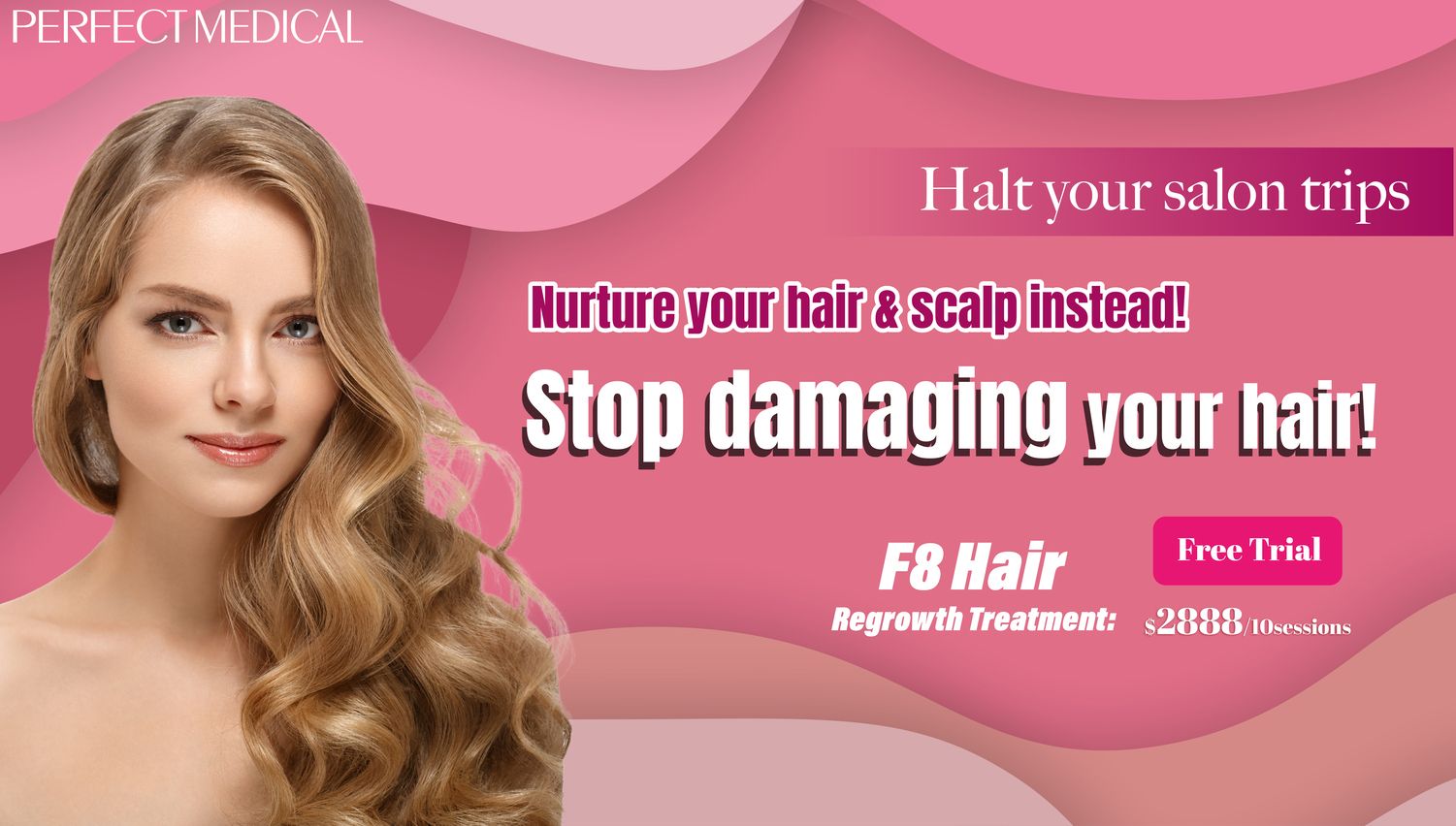
免費體驗
F8 Hair Regrowth Treatment
1 Minute Self-Registration
Date should not be before minimal date
FAQ

1. Why does a severe high ponytail give me hairline problems?
Wearing a high ponytail pulled tightly can lead to discomfort and potential hair issues. The primary reason for this is the excessive tension exerted on your hair follicles and scalp. When your hair is pulled too tightly, it can cause hair follicles to weaken and even result in a condition called traction alopecia. This can lead to hair breakage, thinning, and, in severe cases, permanent hair loss. Additionally, tight ponytails can cause headaches and scalp pain due to the constant strain.
2. Does female pattern baldness appear in all ages?
Yes, it can occur at various ages. It is more commonly associated with ageing, particularly in women who have reached menopause. However, it can also manifest in younger women, sometimes even in their 20s or 30s. The age at which female pattern baldness appears can be influenced by genetics, hormonal factors, and overall health.
3. Do people with naturally curly hair experience less hair loss than those with straight hair?
The rate of hair loss is not inherently linked to hair texture (curly or straight). Hair loss can occur in individuals with any hair type. It is primarily influenced by factors such as genetics, hormonal changes, medical conditions (like alopecia areata), and the use of certain medications or treatments. While curly hair may appear denser due to its natural volume, it is not necessarily associated with reduced hair loss compared to straight hair.
4. Is is itrue that a round brush helps protect hair density?
Using a round brush when styling your hair can help create volume and the illusion of thicker hair. By lifting the hair at the roots and adding bounce, it can give the appearance of increased hair density. However, it's essential to note that this is a temporary cosmetic effect and does not have a long-term impact on hair density. The true preservation of hair density is influenced by factors like genetics, hair care practices, and overall health.
5. Is scalp micropigmentation (SMP) and hair transplant painful?
The discomfort experienced during scalp micropigmentation (SMP) and hair transplant procedures can vary from person to person. However, in both cases, topical numbing creams are often applied to minimise discomfort during the procedures. These numbing creams help make the treatments more tolerable. While some individuals may still feel minor discomfort, especially during hair transplant surgery, advancements in techniques and anaesthesia have significantly reduced pain levels. For those seeking non-painful and less invasive treatment options, low-level laser therapy (LLLT) can be a comfortable alternative for addressing hair loss concerns.






